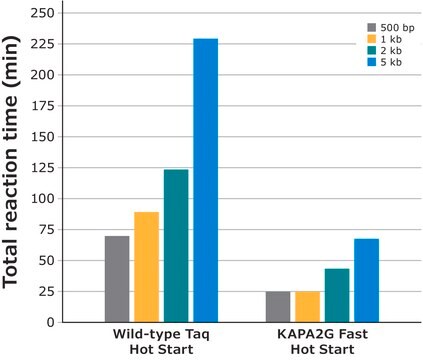GL0010
Golgi Isolation Kit
sufficient for 50 g (tissue)
Synonym(s):
Golgi Kit, Isolation Kit for Golgi
Sign Into View Organizational & Contract Pricing
All Photos(1)
About This Item
UNSPSC Code:
12352200
NACRES:
NA.32
Recommended Products
usage
sufficient for 50 g (tissue)
Quality Level
technique(s)
fractionation: suitable
shipped in
wet ice
storage temp.
2-8°C
General description
The Golgi Isolation Kit provides a method for isolating Golgi membranes from mammalian soft tissues by discontinuous density gradient. The degree of Golgi enrichment can be determined by assaying the acitivty of UDP-galactosyl transferase or by immunodetection of Golgi specific marker proteins like B-COP or GM130 using appropriate antibodies (Cat. No. G6160 and G7295, respectively). Separation from other organelles can be measured using the appropriate marker detection kits (Cat. No. CS0780, CYTOCOX1, CY0100 and CAT100).
Application
Golgi Isolation Kit may be used for the isolation of Golgi membranes from mammalian soft tissues by discontinuous density gradient.
Analysis Note
The Golgi Isolation kit was optimized using rat liver and tested on rat kidney, spleen, and heart.
Kit Components Also Available Separately
Product No.
Description
SDS
- P8340Protease Inhibitor Cocktail, for use with mammalian cell and tissue extracts, DMSO solution 5 mLSDS
Storage Class Code
10 - Combustible liquids
WGK
WGK 3
Choose from one of the most recent versions:
Certificates of Analysis (COA)
Lot/Batch Number
Don't see the Right Version?
If you require a particular version, you can look up a specific certificate by the Lot or Batch number.
Already Own This Product?
Find documentation for the products that you have recently purchased in the Document Library.
Customers Also Viewed
E Prchla et al.
The Journal of cell biology, 131(1), 111-123 (1995-10-01)
Endosomal penetration by nonenveloped viruses might be accomplished by either local breakdown of the endosomal membrane (e.g., adenovirus) or formation of a membrane-spanning pore by capsid proteins. Uncoating of the nonenveloped virus human rhinovirus serotype 2 (HRV2) has been shown
Julien Villeneuve et al.
The Journal of cell biology, 217(2), 649-665 (2017-12-08)
An appreciation of the functional properties of the cytoplasmic fatty acid binding protein 4 (FABP4) has advanced with the recent demonstration that an extracellular form secreted by adipocytes regulates a wide range of physiological functions. Little, however, is known about
A Surroca et al.
The Journal of membrane biology, 177(3), 243-249 (2000-10-03)
We investigated the direct effect of inositol 1,4,5-trisphosphate (IP(3)) and ryanodine receptor agonists on Ca(2+) release from vesicles of a rat liver Golgi apparatus (GA) enriched fraction, which were actively loaded with (45)Ca(2+). Results in GA were compared with those
V J Allan et al.
The Journal of cell biology, 113(2), 347-359 (1991-04-01)
When higher eukaryotic cells enter mitosis, membrane organization changes dramatically and traffic between membrane compartments is inhibited. Since membrane transport along microtubules is involved in secretion, endocytosis, and the positioning of organelles during interphase, we have explored whether the mitotic
E R Sjoberg et al.
The Journal of biological chemistry, 268(14), 10185-10196 (1993-05-15)
The melanoma-associated disialogangliosides 9(7)-O-acetyl-GD3 and 9(7)-O-acetyl-GD2 have been structurally well characterized. However, the compartmentalization and sequence of action of the biosynthetic activities responsible for synthesizing these molecules remain obscure. Here, we have studied the spatial and temporal interrelationships among the
Articles
Centrifugation separates organelles based on size, shape, and density, facilitating subcellular fractionation across various samples.
Our team of scientists has experience in all areas of research including Life Science, Material Science, Chemical Synthesis, Chromatography, Analytical and many others.
Contact Technical Service










